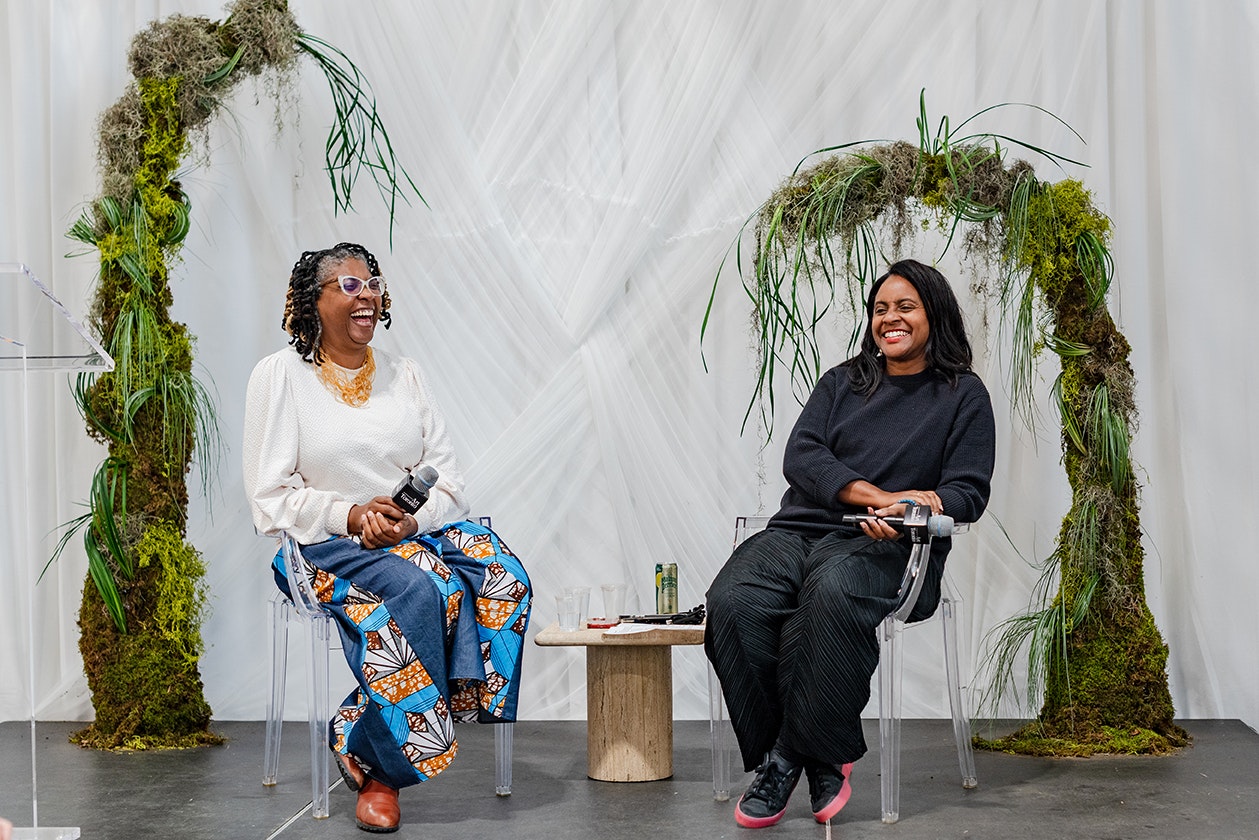Interview with Art Toronto 2025 Designer, Anna Tran
This year, Art Toronto 2025 transformed into a realm of movement, reflection, and sensory connection, thanks to the visionary design of Anna Tran. Inspired by the concept of TRANSITORYWORLDS, Anna’s design invited visitors to drift between realities, blending fluid drapery forms, artisanal textures, and vintage aesthetics to create a series of portals that evoke timelessness and motion.
What inspired your design for this Art Toronto 2025?
The design for Art Toronto 2025 was based around the concept of TRANSITORYWORLDS, which draws inspiration from the idea of movement between realities and spaces that shift between stillness and motion, where visitors can drift between time, culture, and materiality. Through fluid drapery forms, artisanal textures, and vintage aesthetics, the design transforms the fair into a series of transitory portals that invite sensorial engagement and reflection.
As a recent graduate from OCAD, how did this partnership shape your experience as a designer?
This collaboration offered a bridge between my academic exploration and professional practice. It deepened my understanding of how conceptual design can translate into large-scale, real-world experiences, while reinforcing my passion for creating environments that connect audiences through atmosphere, story, and material presence.
What considerations did you take into account when integrating designer and vintage furniture into the space?
The integration of designer and vintage furniture from Bonne Choice and Andreu World was guided by the idea of layering within my overarching design concept of TRANSITORYWORLDS. Each vintage piece carries traces of history and material memory, while contemporary designer elements introduce a sense of clarity and grounding in the present. Together, they created a dialogue between past and future that mirrored the fair’s exploration of movement between realities. This interplay of eras and forms allowed the space to feel both familiar and transitory, encouraging visitors to drift fluidly between different moments in time.
Florals played a prominent role in your design. How did they contribute to your overall vision?
Created in collaboration with RyeFlorals, the florals acted as sculptural anchors within the space. The florals brought bold, organic forms that balanced against the softness of the light, airy drapery. This interplay between structure and fluidity really solidified my overall vision, transforming each zone into a living tableau of motion, stillness, and sensory connection.
You recently completed an internship with the opera in Berlin. How has that experience influenced your work as a designer?
My time at the Berlin Opera Academy taught me to approach design as choreography. Considering rhythm, sequence, and emotional resonance, it influenced how I shaped the spaces as an experience that unfolds dynamically, engaging both movement and stillness within the fair.
Was sustainability a consideration in your design, and how did it influence your approach?
Absolutely. Sustainability was a central consideration. All materials were natural or responsibly sourced, including wood and recycled polyester fabrics. Beyond material choice, sustainability also guided the modularity of the installations, as each element was designed to be repurposed or reconfigured for future use.







